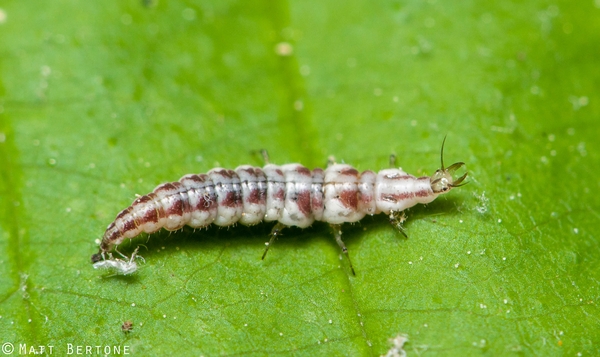Unknown Facts About Eco Bed Bug Exterminators Dc
Unknown Facts About Eco Bed Bug Exterminators Dc
Blog Article
Some Known Questions About Eco Bed Bug Exterminators Dc.
Table of ContentsThe Best Guide To Eco Bed Bug Exterminators DcThe Best Strategy To Use For Eco Bed Bug Exterminators DcThe Buzz on Eco Bed Bug Exterminators DcFascination About Eco Bed Bug Exterminators Dc7 Simple Techniques For Eco Bed Bug Exterminators Dc
Because chemicals are toxic, they are additionally potentially hazardous to humans, animals, other microorganisms, and the setting. People who make use of pesticides or consistently come in contact with them have to recognize the loved one poisoning, possible health and wellness results, and preventative procedures to reduce direct exposure to the items they make use of. Danger, or threat, of using pesticides is the possibility for injury, or the degree of danger entailed in utilizing a chemical under a given set of problems.
However, applicators can minimize or nearly eliminate exposure-- and hence minimize hazard-- by complying with the tag directions, utilizing personal protective clothing and equipment (PPE), and managing the pesticide effectively. Even more than 95 percent of all pesticide direct exposures come from dermal exposure, mostly to the hands and forearms. By wearing a set of unlined, chemical-resistant handwear covers, this sort of exposure can be almost gotten rid of.
The unsafe effects that happen from a solitary exposure by any route of entry are called "intense effects." The 4 routes of direct exposure are dermal (skin), breathing (lungs), oral (mouth), and the eyes. Acute toxicity is figured out by checking out the dermal poisoning, breathing poisoning, and dental toxicity of test pets.
The Only Guide to Eco Bed Bug Exterminators Dc
Severe poisoning is determined as the quantity or focus of a toxicant-- the a.i.-- required to eliminate half of the pets in a test population. This measure is usually revealed as the LD50 (dangerous dose 50) or the LC50 (deadly focus 50). Furthermore, the LD50 and LC50 values are based upon a solitary dosage and are recorded in milligrams of pesticide per kilogram of body weight (mg/kg) of the guinea pig or partly per million (ppm).
The lower the LD50 or LC50 worth of a chemical item, the greater its poisoning to humans and pets. Chemicals with a high LD50 are the least toxic to people if utilized according to the directions on the item tag. The persistent toxicity of a chemical is figured out by subjecting test animals to lasting direct exposure to the active component.
The persistent poisoning of a chemical is much more challenging than intense toxicity to figure out with research laboratory evaluation. Products are classified on the basis of their loved one severe poisoning (their LD50 or LC50 worths). Pesticides that are categorized as very harmful (Toxicity Group I) on the basis of either dental, dermal, or inhalation poisoning should have the signal words risk and toxin published in red with a skull and crossbones icon plainly showed on the front panel of the bundle label.
The acute (single dose) dental LD50 for chemical products in this team ranges from a trace quantity to 50 mg/kg. As an example, exposure of a couple of drops of a material taken orally could be fatal to a 150-pound individual. Some pesticide items have simply the signal word risk, which tells you nothing regarding the acute poisoning, simply that the item can cause severe eye damage or extreme skin inflammation
The Ultimate Guide To Eco Bed Bug Exterminators Dc
In this category, the intense oral LD50 ranges from 50 to 500 mg/kg. A teaspoon to an ounce of this product might be fatal to a 150-pound individual (exterminator near me). Chemical products categorized as either somewhat poisonous or relatively nontoxic (Toxicity Categories III and IV) are called for to have the signal word care on the chemical label

Some Of Eco Bed Bug Exterminators Dc
All pesticide toxicity values, including the Consisting of, can be found on the product's Item Safety Data Sheet (MSDS). Pesticide tags and MSDS can be gotten from retailers or makes. On top of that, most products additionally know that can be located on the web. The signs of pesticide poisoning can vary from a mild skin irritability to coma and even death.
People likewise vary in their sensitivity to various levels of these chemicals. Some individuals might show no response to an exposure that may create extreme health problem in others (pest control Washington DC). Due to prospective wellness worries, pesticide users and handlers need to recognize the usual signs and signs and symptoms of chemical poisoning. The effects, or signs, of chemical poisoning can be extensively specified as either topical or systemic.
What Does Eco Bed Bug Exterminators Dc Do?
Dermatitis, or swelling of the skin, is accepted as the most commonly reported topical impact associated with pesticide exposure. Some people tend to cough, hiss, or sneeze More about the author when exposed to pesticide sprays.
This symptom normally subsides within a few mins after an individual is eliminated from the exposure to the toxic irritant. Nonetheless, a response to a pesticide item that creates somebody not only to sneeze and cough however additionally to develop serious intense respiratory symptoms is most likely to be a real hypersensitivity or allergy.
Systemic effects are quite different from topical effects. They frequently take place far from the initial point of get in touch with as a result of the pesticide being soaked up right into and dispersed throughout the body. Systemic effects commonly include nausea, throwing up, fatigue, migraine, and digestive tract conditions. In innovative poisoning cases, the individual may experience modifications in heart price, difficulty breathing, convulsions, and coma, which could cause death.
Report this page